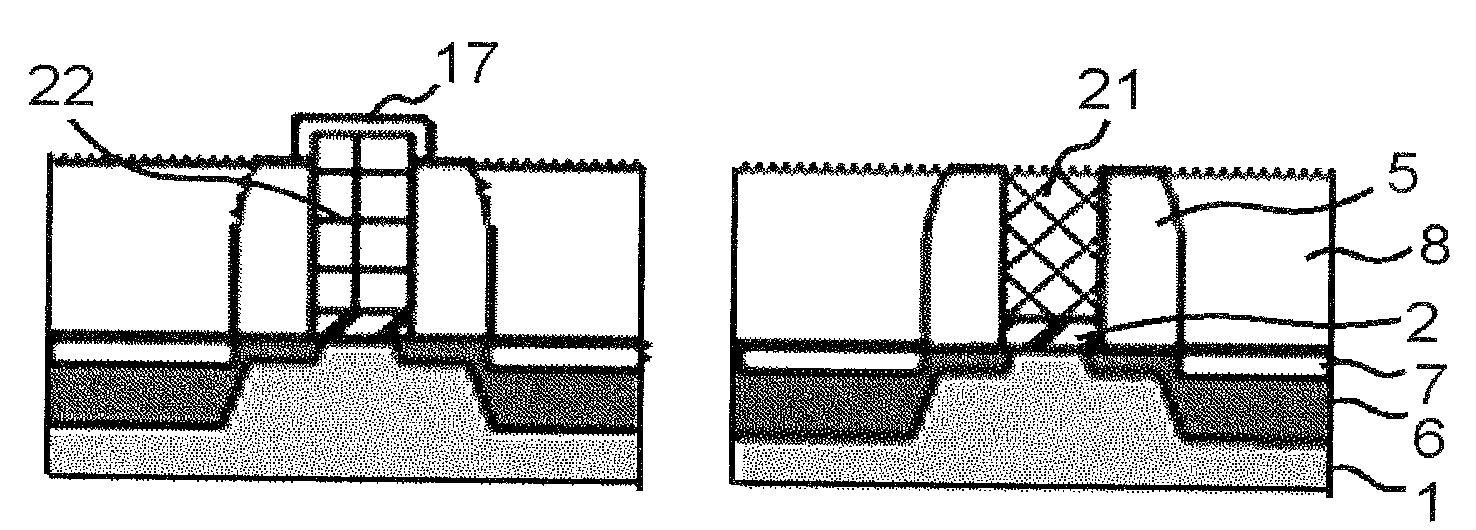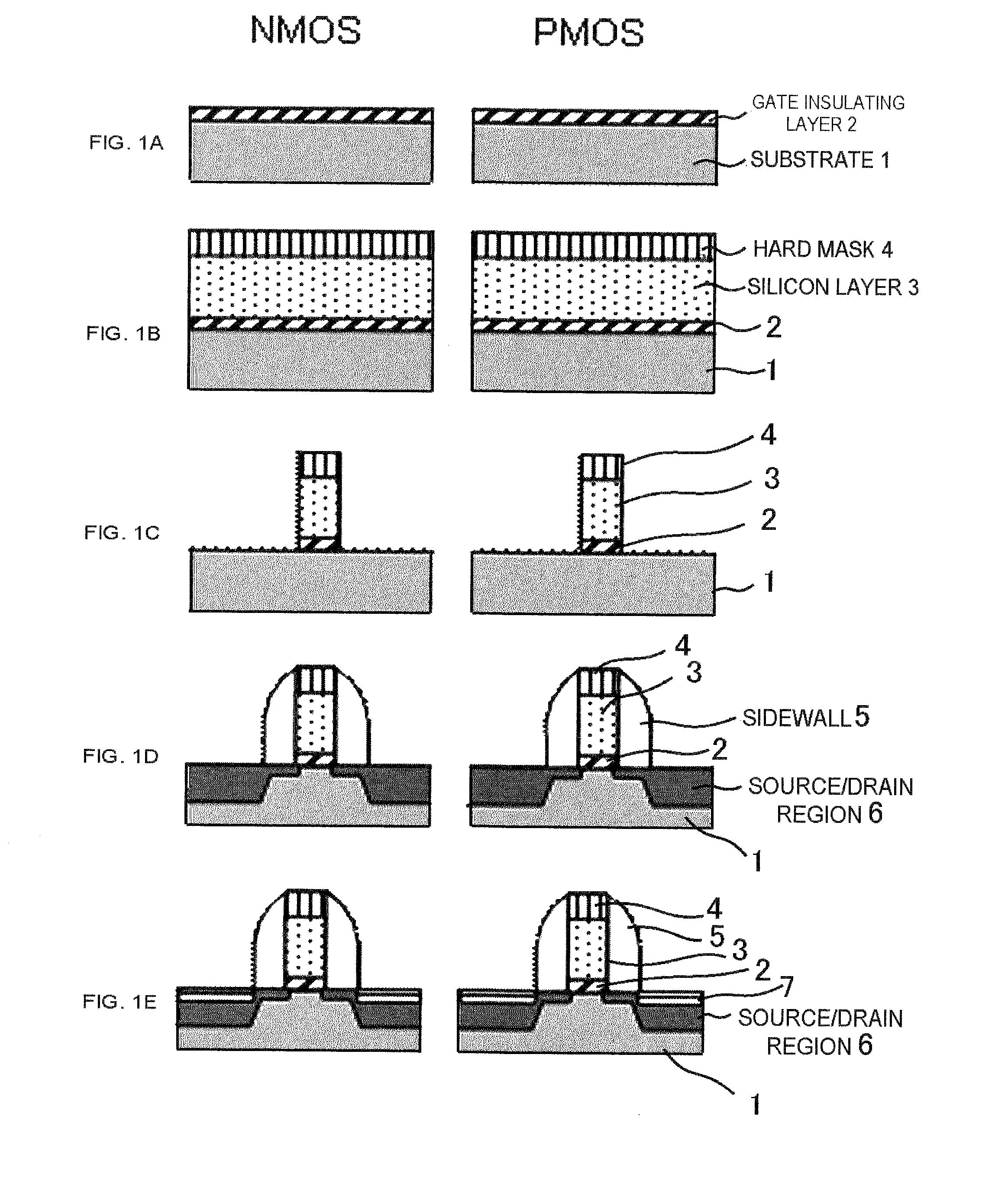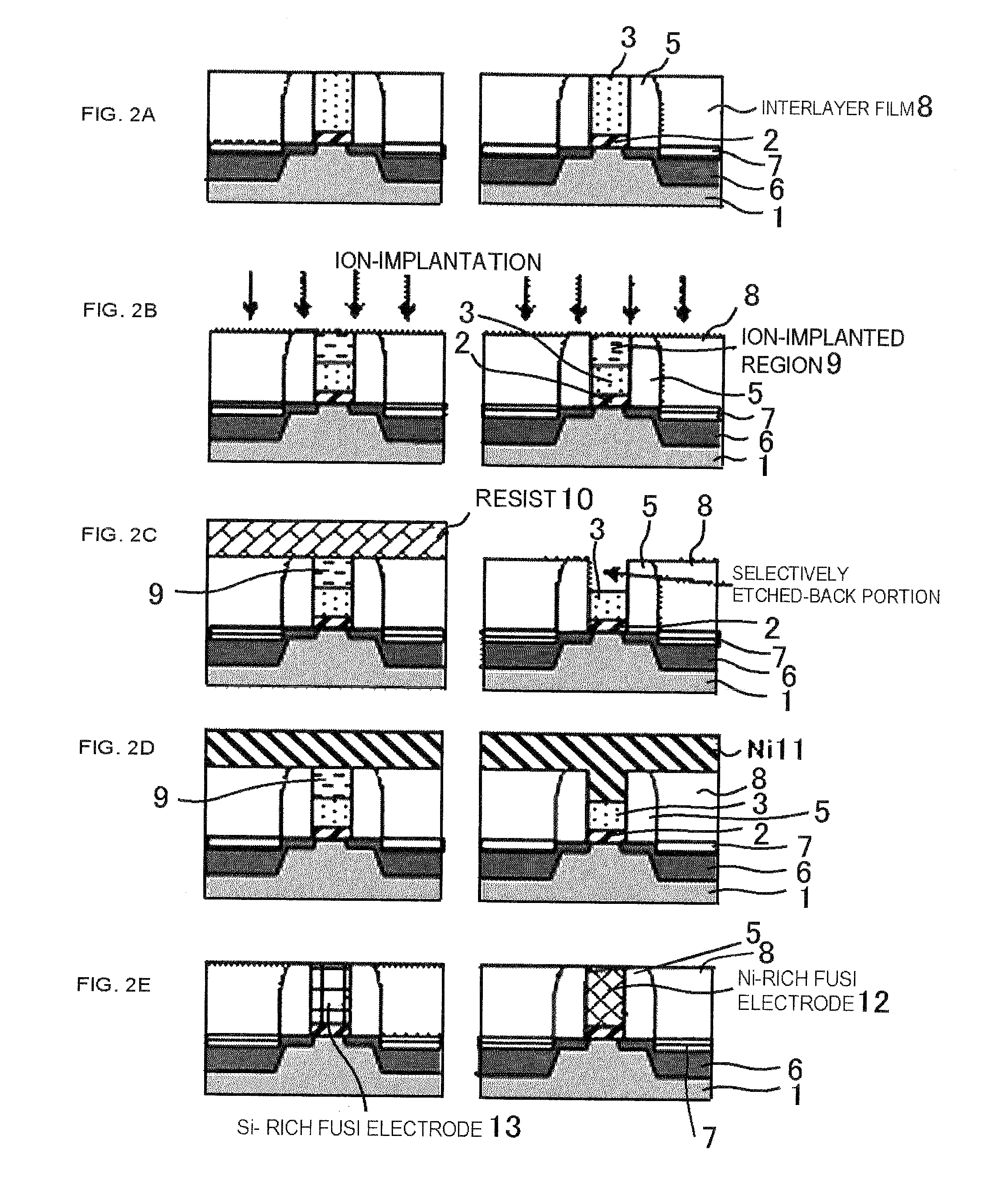Method of manufacturing semiconductor device
a manufacturing method and semiconductor technology, applied in the direction of semiconductor devices, basic electric elements, electrical appliances, etc., can solve the problems of insufficient structure and composition stability in the vicinity of the boundary between the n and p gate electrodes, and prominent drawbacks, so as to facilitate the obtaining of fusi phase, reduce the number of manufacturing steps, and reduce the number of mask layers
- Summary
- Abstract
- Description
- Claims
- Application Information
AI Technical Summary
Benefits of technology
Problems solved by technology
Method used
Image
Examples
first embodiment
[0028]Referring to FIGS. 1A to 1E, a method of manufacturing a semiconductor device according to a first embodiment of the present invention will be described hereunder.
[0029]An oxide layer that serves as the base of a high-k gate insulating layer 2 is formed on a Si substrate 1 in a thickness of 1.0 nm by a thermal oxidation process, and a CVD process is performed so as to deposit a HfSiO layer in a thickness of 2.0 nm. The HfSiO layer is nitrided though a plasma nitriding process, to thereby form a HfSiON gate insulating layer 2 (FIG. 1A).
[0030]Then a polycrystalline silicon layer 3 is deposited on the gate insulating layer 2 in a thickness of 100 nm, and a nitride layer of 50 nm in thickness is formed as a hard mask 4 to be employed for processing the gate (FIG. 1B).
[0031]After performing a lithography process with a resist so as to process the hard mask 4, the polycrystalline silicon layer 3 and the gate insulating layer 2 are subjected to an etching process, with the hard mask ...
second embodiment
[0049]This embodiment further includes a pre-doping process, after the deposition of the polycrystalline silicon layer on the gate insulating layer in the process of the first embodiment. Referring to FIGS. 5A to 6E, such process will be described hereunder.
[0050]After forming the gate insulating layer 2 and the polycrystalline silicon layer 3 as in the first embodiment (FIG. 5A), an impurity 1 is ion-implanted into the entire surface of the polycrystalline silicon to thereby form an impurity-doped region, without performing a lithography process (FIG. 5B). In this embodiment, As is implanted at 10 keV acceleration voltage and in 3×1015 cm−2 concentration. Thereafter, similar process to the first embodiment is performed so as to process the gate with the hard mask 4, formation of the source / drain region 6, and formation of the sidewall 5. Those processes include heat treatment processes such as the activation of the source / drain impurity (generally 900° C. or higher) and substrate h...
third embodiment
[0058]This embodiment describes an example of composition control with respect to a Ni silicide gate electrode, in the case where As is included as the impurity element implanted after exposing the upper surface of the polycrystalline silicon, referring to FIGS. 7A to 8D.
[0059]The process up to exposing the upper surface of the polycrystalline silicon layer is the same as the first embodiment, and hence the description is not repeated. After exposing the upper surface of the polycrystalline silicon layer 3 (FIG. 7A), impurity ion implantation is executed for controlling the composition of the crystalline phase of the FUSI electrode. In this embodiment, As is implanted in a concentration of 3×1015 cm−2 and at an acceleration voltage 10 keV, into the polycrystalline silicon of the gate. A majority of the As thus implanted into the polycrystalline silicon is present within a depth of 50 nm from the surface thereof (As-doped region 20 in FIG. 7B). As already stated, it is important to e...
PUM
 Login to View More
Login to View More Abstract
Description
Claims
Application Information
 Login to View More
Login to View More - R&D
- Intellectual Property
- Life Sciences
- Materials
- Tech Scout
- Unparalleled Data Quality
- Higher Quality Content
- 60% Fewer Hallucinations
Browse by: Latest US Patents, China's latest patents, Technical Efficacy Thesaurus, Application Domain, Technology Topic, Popular Technical Reports.
© 2025 PatSnap. All rights reserved.Legal|Privacy policy|Modern Slavery Act Transparency Statement|Sitemap|About US| Contact US: help@patsnap.com



